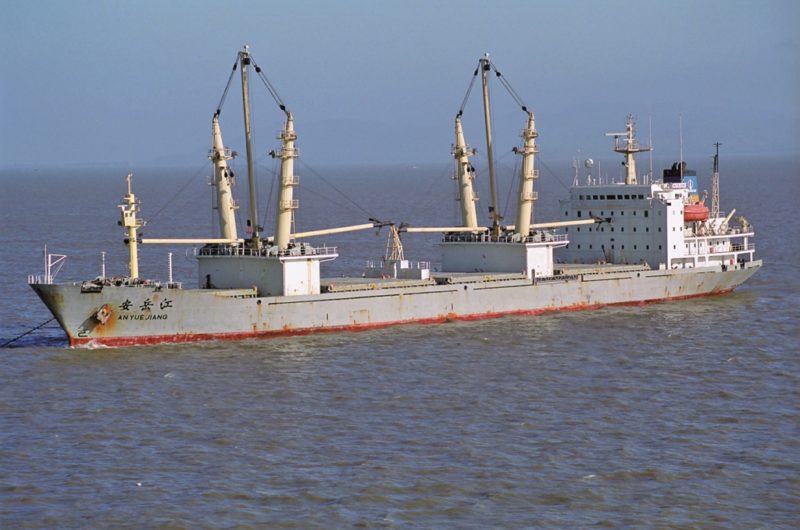
The Port of Mumbai, formerly known as the Port of Bombay up to 1995, is a very busy and large port, handling 60.70 million tonnes of export and import cargo during the year ending 31st March 2020. This was slightly down by 0.11 million tonnes from the previous financial year due to less coal and pulses handled. The huge number of ships that entered the port was 6,179 (up from 5,825 in the previous year) with the average turnround time being 2.56 days (down from 4.58 days in the year ending 31st March 2016). Most of the huge total of cargo is handled at facilities at anchorages in Mumbai harbour and is known as ‘stream’ cargo, including crude oil, petroleum products, coal, petroleum coke, scrap, iron ore, sugar, chemicals, molasses, oilcakes, edible oils, barytes, bauxite, china clay, chromite, copper, feldspar, gypsum, magnesite, manganese, textiles, machine tools, iron and steel, wheat, pulses, rice, barley, corn, millet, sorghum, potatoes, cassava, tea, coffee, chick peas and many other types of cargo. The cargo is handled either at the three principal enclosed docks of Indira Dock, Victoria Dock and Prince’s Dock or at ‘stream’ in the harbour, with the dockland area situated in south eastern Mumbai, down the long Dock Road from the Victoria Terminus Railway Station.
HISTORY OF MUMBAI
Whilst archaeology evidence suggests Stone Age and Paeolithic occupation in the Western India region, the earliest known occupants of the Mumbai area were the Koli fishing community. As early as 300 BC, the Ancient Greeks called the area Heptanesia as there were seven islands that have since been joined together from that time, and today make up the Mumbai peninsula. From the 3rd century BC, there have been several empires and dynasties that have conquered the area, including the Asoka Empire, the Calukyas peoples, the Yadavas of Devagiri, the Khalji dynasty, with Muslim armies marching in and conquering the area in 1348. After a long spell as part of the Kingdom of Gujarat, the Portuguese explorers of Vasco da Gama and Bartholomew Dias and their followers failed to take the town in 1507 but did capture it in 1534 from Bahadur Shah of Gujarat, holding it during the 16th century, but they failed to hold on to it after it fell to the British Empire in 1661.
The religious dynasty of Catherine of Braganza of Portugal married her off to Charles II of Britain, from whom Bombay was given to the East India Company in 1668 as part of the marriage dowry. William Hornby became Governor of the city in 1771 and started a massive civil engineering project called the Hornby Vellard Project to connect all of the seven islands of Bombay. Finally, the last earthworks and land bridge was in place by the year 1845 to give the Mumbai Peninsula of today. Rapid industrialisation of the peninsula then began, with the Port of Bombay becoming the biggest cotton spinning and weaving market in India in 1860, with the first comprehensive rail network linking to the port in the whole of the Asian continent. The most frequent train service ran from the Victoria Terminus Railway Station to the neighbouring Thane region in 1853, covering a total distance of 21 miles.
The current huge Mumbai train system is an offshoot of that same early network, with rush hour seeing many Mumbai commuters holding onto the outside parts of the carriages in order to reach the city in time for work. The American Civil War cut off supplies of cotton to Lancashire cotton mills during 1861 to 1866, giving Bombay the opportunity to capture the world cotton market. The opening of the Suez Canal in 1869 gave a tremendous boost to the economy of India and Bombay, but the people of Bombay later suffered heavily from an outbreak of a devastating plague in 1896.
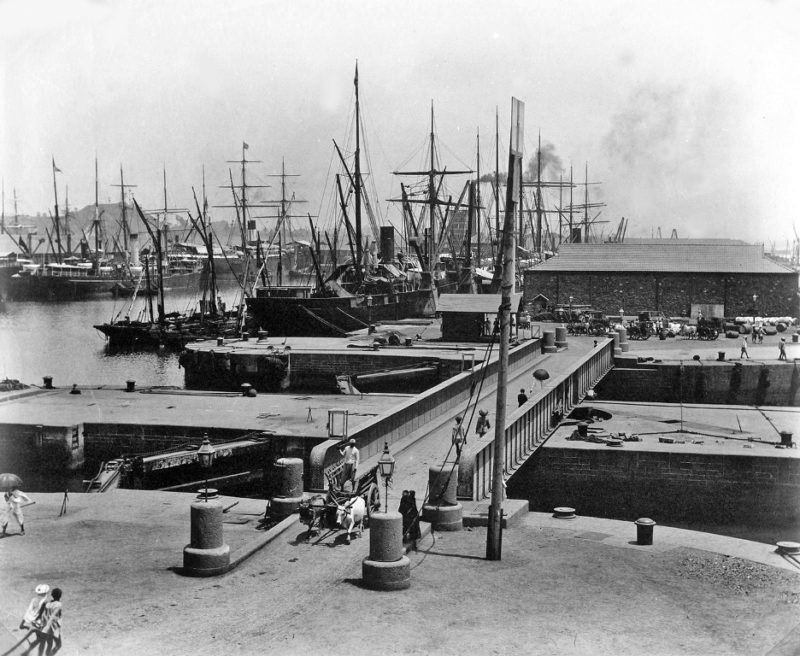
During the 1890s and 1900s, the Port of Bombay became a very prosperous institution, with Bombay becoming the centre of a political struggle leading to the first Session of the Indian National Congress movement in 1885, fighting for nationalistic freedom, which were eventually won after the non-violent doctrines of Mahatma Ghandi held sway in the Indian National Congress of 1943, leading to full independence from Britain and the creation of the States of India and Pakistan.
The new country of India began self determination in August 1947, ending 282 years of rule by the British Raj, with Bombay now the capital of Maharashtra State, carved out of the previous Bombay State that had included Gujarat and Maharashtra. In the 1970s, the Port of Bombay experienced another large wave of immigration and a subsequent big construction boom to house the new workers, and Bombay overtook Calcutta as the biggest city in India in 1992. In 1995, Shiv Sena came to power in Maharashtra State by forming a coalition government with the Bharatiya Janata Party (BJP). Soon after, the city of Bombay was renamed as the city of Mumbai, renamed to its original name in honour of the goddess Mumbadevi, the deity of the indigenous Koli people. All over India, similar English city names were dropped in favour of local Indian names to assert regional identities.
However, Bombay has suffered from severe and intense riots and terrorist bombings and actions in recent decades, with hundreds of lives lost in the 1992/93 riots that followed the demolition of the Babri Masjid. Severe bombings and reprisals followed from rival factions, and in July 2006 seven huge bombs exploded within eleven minutes on multiple local trains. Bombings in late 2008 near the famous Gateway of India, known to generations of British troops, and the nearby Taj Mahal Palace Hotel, built in 1903 by the prominent Parsi steel industrialist Jamsetji N. Tata with Moorish red domes, arches, columns, crystal chandeliers lighting the spacious halls and galleries, was badly damaged when occupied by terrorists for several days. The death toll was over 175 lives lost with the city in ‘lock down’ and held hostage for three days. The Parsi community distinct culture and lifestyle is preserved today in the charming housing settlement of Cusrow Baug built in 1934 and today is home to over 500 families.
The Metropolitan Area of Mumbai has a population of 19 million people and is the fifth biggest city in the world. It is the capital of Maharashtra State with big populations in the Navi Mumbai and Thane areas. The Port of Mumbai is one of the biggest in the world, with a new and growing large container port of Jawaharlal Nehru Port Trust (JNPT) just six miles east of the Port of Mumbai across the harbour. The Port of Mumbai lies 432 miles south south east of the Port of Kandla.
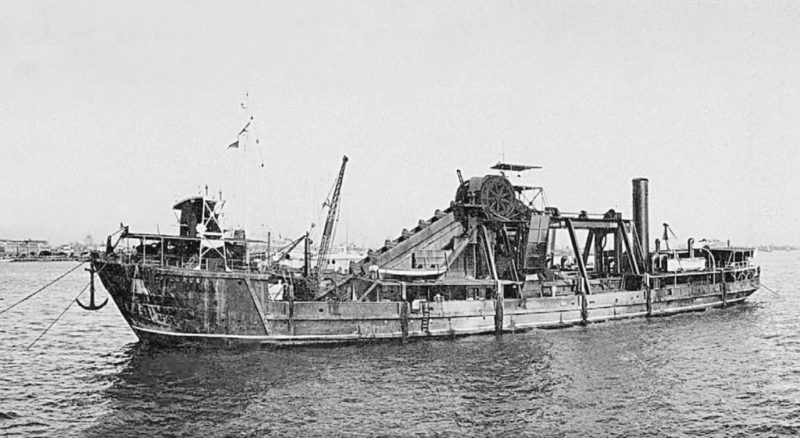
HISTORY AND FACILITIES OF THE PORT OF MUMBAI
The harbour at Bombay was used for centuries by the Maratha Navy as well as the Portuguese and British colonial navies. The Port of Mumbai has developed from these humble beginnings to employ 7,000 employees and administer three enclosed docks with 43 berths, five alongside wharves including the Ballard Pier Station and Ballard Pier Extension, five oil jetties, two liquid chemical jetties and 63 anchorage points for working ‘stream’ cargo. The Bombay Port Trust was established on 26th June 1873 with Colonel J. A. Ballard as its first Chairman, with an immediate start on constructing the first of the three present day enclosed docks. The port today is administered by the Mumbai Port Trust, the title being altered in 1995 along with that of the city.
Port development was undertaken by the civil engineering and architecture partnership of Sir John Wolfe Barry (1836-1918) and Lt. Col. Arthur John Barry (1859-1943) as joint consulting engineers to the Bombay Port Trust. The port is a coastal tide gate harbour and is known as the ‘Gateway to India’, with a large building of the same name constructed on the waterfront where all British troops and most passengers alighted from passenger liners. The port has undergone tremendous expansion, not only with the facilities outlined above, but also with the Jawaharlal Nehru Port Trust (JNPT) handling containers at Nhava Sheva only six nautical miles across the harbour from the Port of Mumbai. This container port with 95% of its activity being the import and export of containers began operations in 1989 with the full blessing and financial help of the Bombay Port Trust as the Port of Bombay had become constrained in its handling capacity as a bulk and general cargo port.
Prince’s Dock was opened in 1880 and today has eight berths with a minimum draft of 21 feet. Victoria Dock was opened in 1891 and today has fourteen berths with a minimum draft of 22 feet. Indira Dock is the main cargo handling dock of the port and was named after Indira Gandhi (1917-1984), daughter of Jawaharlal Nehru, first Prime Minister of India, and she served as Prime Minister from January 1966 to March 1977 and again from January 1980 until her assassination in October 1984. The dock was originally named Alexandra Dock, and was opened in 1914 with 21 berths including a passenger handling berth. Prince’s Dock and Victoria Dock are semi tidal docks with vessels arriving and sailing only at high tide, whereas Indira Dock has a lock enabling vessels to enter or depart at any time. Indira Dock has a total water area of 24.04 hectares and quays of around 4,000 metres in length.
The Ballard Pier Station and Ballard Pier Extension are on the southward extension of the East Arm of Indira Dock and are each of 244 metres in length, with the Extension having a modern passenger Terminal Building, handling the International Cruise Terminal and immigration and clearance facilities for the passengers and crews of cruise liners.
The International Cruise Terminal has 6,000m2 of space, but only 2,500m2 of this is used with full air conditioning, a modern passenger lounge, a duty free shop and café. Mumbai harbour has 63 anchorage points for ships to work ‘stream’ cargo, with pilotage necessary to all anchorage points and enclosed docks and wharves.
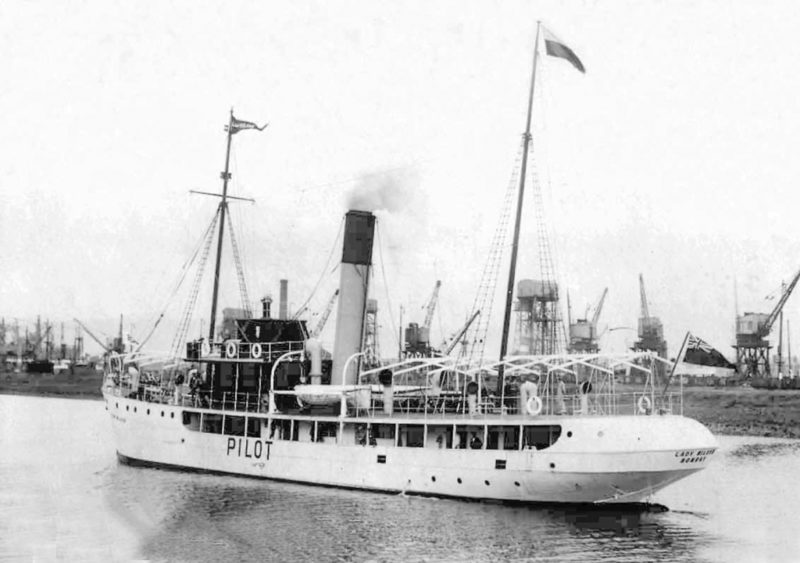
The port administration building at the entrance to Indira Dock is near a round, black and white stone Martello Tower that was completed in 1891 and was thus 125 years old in 2016. The history of Mumbai Port has been well written in the book ‘Tides of Time’ by M. V. Kamath, and is the story of the struggle to obtain trades union recognition of dock labour at the height of the Indian nationalist movement that eventually brought cordiality to management and trades union relations. Famine, plague, recessions, strikes and a major ammunition explosion in 1944 have all played a part in the history of the cargo handling docks, as well as ship repair work in the Hughes dry dock inside Indira Dock of length 304 metres with electric pumps for filling and draining the dock, two dozen welding plants and eight oxy acetylene connections. Decades ago, there were also shipbuilding yards owned by the Wadia families.
The main dredging work of Mumbai harbour and its enclosed docks was done by a fleet of dredgers, including the twin screw bucket dredger Barbus 830/24, the twin screw grab dredger Chelura 1,521/23, as well as other the grab dredgers and the twin screw hopper dredger Silurus 1,925/15 all built by W. Simons & Co. Ltd. of Renfrew with bilge side keels to take the ground. Suction dredgers included Widgeon, Spotbill, and Redshank of 740 grt and 800 tons hopper capacity, Moorhen and Dabchick both of 566 grt and 600 tons hopper capacity, the cutter suction dredger Vikas of 1,500 tons hopper capacity built in 1959, and the cutter suction dredger Vikram of 3,000 tons hopper capacity completed in October 1962 by IHC of Holland. Lady Wilson 433/27 was the port pilot vessel with Zephyr 121/30 as a combined pilot vessel and tug, the twin screw Sarus 830/14 as the port crane barge, and there were numerous harbour and salvage tugs owned by the Bombay Port Trust.
An extremely serious explosion in 1944 of the war built standard cargo ship Fort Stikine (see later in this article), and the colossal clearance work of the enclosed docks affected by the explosion, as well as the wartime reconstruction of dilapidated and war worn facilities took years to complete. The shipping companies of the Shipping Corporation of India, the Indian National Steamship Owners Association and the Bombay Chamber of Commerce and Industry remained loyal to the port, with traffic and throughput up to 7.6 million tons in the year 1951/52. This had risen enormously to 17.0 million tons in the year 1964/65 with 5.5 million tons of general cargo, 2.0 million tons of bulk cargo, and 9.5 million tons of crude oil and petroleum products handled at the Pir Pau pier.
The port equipment in 1964/65 comprised 49 shoreside electric cranes of up to 6 tons capacity for general cargo and bulk cargo work, including the discharge of ores, cement clinker, sulphate of ammonia, timber and many other general and bulk cargoes. The port owned 36 forklifts at this time, two dozen platform trucks, 58 tractors, and 54 liquid tank containers for stillage use. However, the movement of cargo inward and outward by rail and road was becoming extremely restricted, and resulted in piped networks being developed for handling crude oil, petroleum products and lubricants from the four oil jetties at Jawahar Dweep. The Pir Pau pier became so busy and congested that a second liquid chemical handling berth was eventually built beside the original pier to handle 2.5 million tons of cargo.
The four oil jetties at Jawahar Dweep are named J1, J2, J3 and J4 handle crude oil imports for the HPCL (Hindustan Petroleum Corporation Ltd. of India) and BPCL (Bharat Petroleum Co. Ltd.) refineries, with current throughputs of 19.80 million metric tonnes, which will increase to 22.80 million metric tonnes after the completion of the J5 jetty. Fully laden Aframax tankers of up to 125,000 dwt will berth at J5 with a draft of 40 feet, with two jetties for tankers up to 70,000 dwt and two jetties for tankers up to 48,000 dwt, and with bunkering tankers berthing at the MOT-JD berth of the joint BPCL/HPCL oil partnership. Jawahar Dweep will have a Tank Farm built on reclaimed land giving a faster turnround and pumping rate than already exists via the 4 kilometres of submarine pipeline and 3 kilometres of onshore pipeline. The Tank Farm will be owned by the BPCL and HPCL refineries, and land will be offered by the Port of Mumbai. Pir Pau old Jetty of 170.7 metres in length handles liquid chemical tankers of up to 47,000 dwt, and Pir Pau new jetty of length 197.0 metres was opened in December 1996, both jetties have alongside depths of 10.5 metres. A five million tonne liquid regasification handling terminal for importing liquid natural gas (LNG) is currently being built.
The natural deep water harbour of Mumbai is around 400km2 in area, and is protected by the mainland to the east and the Mumbai peninsula to the west. The deep water of the harbour provides ample shelter for shipping, with the approaches well lighted and the Prongs Lighthouse to the north visible for 27 kilometres, and the Kennery Lighthouse to the south visible for 29 kilometres. The port is approached from the south west between Prongs Reef and Thull Reef, lying off the mainland to the south east to a distance of around 9 kilometres. The tidal range at the port is only 3.3 metres at mean high water neap tides.
The Vessel Traffic System (VTS) is a state of the art system for port movements, operations, surveillance and harbour navigation, and was installed in September 2011. The VTS employs three dual radars, five microwave links, two control stations, one radio direction finder, CCTV, VHF and UHF communications, GPS, AIS Automatic Identification System, and other electronic aids.
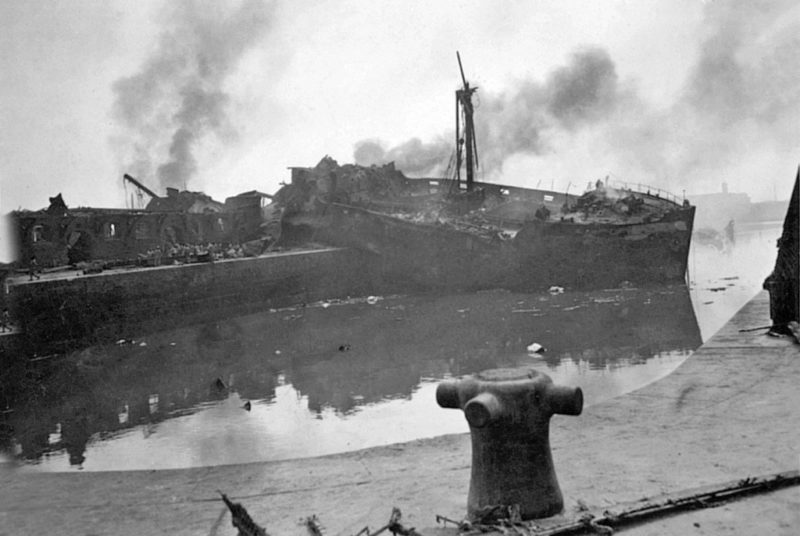
The Port of Mumbai is the leading automobile handling port of the entire coast of Western India, with a dedicated auto storage yard of 150,000m2, with all pre-shipment storage being 30 days free of charge. The pure car truck carrier (PCTC) Hoegh Shanghai shipped 6,388 export vehicles, mostly JEEP SUVs, to Western countries on 29th March 2018, with vehicle traffic up 10.66% in 2017/18. Throughput and handling work has speeded up at the port since 5th January 2018 when a 24 hours seven days per week rota was brought in to speed up productivity and consequent reductions in the turnround times of vessels. This has resulted in a 10% increase in cargo handling hours without any further cost to users.
Total cargo throughput has increased from 59.18 million metric tonnes in 2013/14, to 61.66 million metric tonnes in 2014/15, to 63.33 million metric tonnes during the year 2016/17, and 62.83 million metric tonnes in the year 2017/18. Current port equipment includes several 100 tonne capacity tower cranes, four mobile cranes of between 50 and 100 tonne capacity, 25 forklifts as well as container handling equipment. The main channel depth is between 7.1 and 9.1 metres, the anchorage depths vary from 9.4 to 10.0 metres, the cargo pier depths vary from 4.9 to 6.1 metres, and the oil terminals from 11.0 to 12.2 metres. The Port of Mumbai is located at position 18°56′ North, 72°53′ East, and runs in a north to south direction on the south eastern side of the Mumbai peninsula. Ravi M. Parmar and Sanjay Bhatia have been Chairmen in recent years of the Mumbai Port Trust that operates the port.
A dedicated rail corridor has been operated by the Port of Mumbai to the Central Railway and Western Railway of India from the port to Wadala and Kurla interchanges from May 2016 and can also operate at night between 2300 hours and 0500 hours. This is due to restricted road and rail access to and from the port, with the five million tonnes of steel imports in the form of steel rods, plates and coils at the port, as well as coal imports (India is mostly deficient in steel and coal) using the rail corridors. The Port Mumbai operates its own fleet of five locomotives on its dock network of 55 kilometres of rail, with trains of 45 wagons handled with double despatch facilities. The New Ferry Wharf in the Port of Mumbai operates two berths for ferries on berths of 312 and 249 metres in length with alongside depths of 3.2 metres.
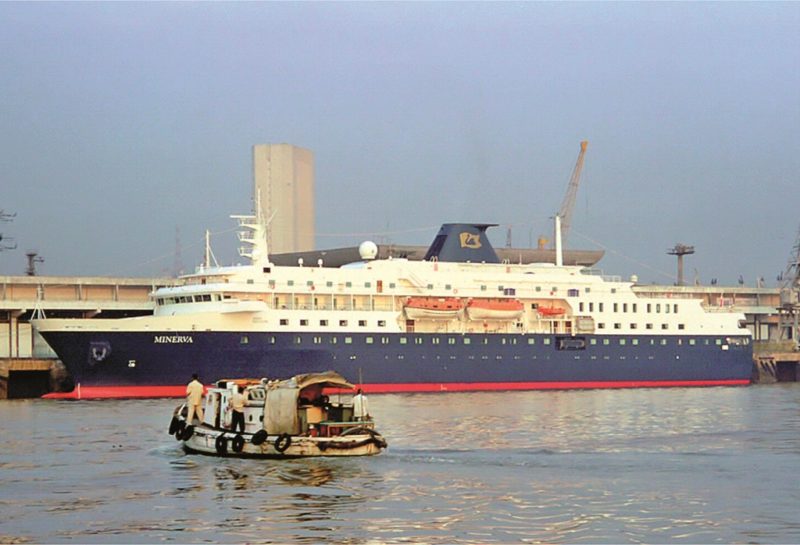
Construction sand is imported from the Philippines, and the port handles much project cargo, containers, bulk cargo, food, grain, fertilisers, and timber. Future development will take place at Kanhoji Angre, an island in the harbour with a fort built by the Portuguese and a lighthouse, for cruise ship passengers and tourists. The construction of a landing stage has already been completed, and the project will feature land and water based sports activities with 75% of the land area being soft landscaped to provide a suitable quiet and serene atmosphere for tourists. The existing buildings on the island will be converted for tourist purposes with street lighting, solar panelling, toilets, drinking water facilities and restaurants provided.
The recently developed Gamadia Complex is a vehicle storage area for export vehicles at the customs bonded area of the port, and has now limited handling damage to vehicles to only 1%. The Port of Mumbai owns 1,800 acres of undeveloped land for future use, but a private port is being developed at Rewas by Reliance Industries Ltd. at a point 9.9 nautical miles south east of the Port of Mumbai. This private port will use the Port of Mumbai main channel for vessels entering and leaving, but at the time of writing the charges for this use are still under negotiation with final estimates not able to be calculated.
No dredging is required in the enclosed docks, with only maintenance of the depth of the main channel undertaken by contract dredging, with the contract with the Dredging Corporation not renewed on 28th May 2018. The berth sizes at the three enclosed docks are now given:-

Indira Dock has 21 berths with 15 of these being multi purpose berths of total length 2,641 metres, five berths handling containers totalling 812 metres, and one longer container handling berth of 180 metres in length. The entrance lock is 30.5 metres wide and 228.6 metres in length, and alongside depth is between 8.8 and 9.1 metres. Indira Dock is being updated with transit sheds and storage areas being repaired and repainted to enhance the look of the prime cargo handling dock of the port. Indira Dock is to the south of both Prince’s Dock and Victoria Dock, as well as the Ferry Wharf and the Angriya Cruise Ship Terminal.

Prince’s Dock with eight berths of total length 1,250 metres, with two of 212 metres in length, four of 140 metres in length, and two of 138 metres in length, with alongside depths of between 6.1 and 6.4 metres. Part of this dock is proposed to be developed into a new marina in addition to the already existing marina for hundreds of yachts. Restaurants, shopping malls, yacht workshops, diesel fuel stations, a Synchro Lift facility for boat repair, hard storage, water and electricity supply and waste disposal will be provided.
Victoria Dock with 14 berths with a total length of 1,732 metres, with eight of these of 122 metres, three of 152 metres in length, three of 100 metres in length, with a further berth reserved for Port of Mumbai tugs and launches. Alongside depth at all berths of 6.7 metres.
Modern transit sheds have replaced the old warehouses, with Indira Dock having a dozen transit sheds of 76,740m2 in area. The Port of Mumbai has a total of 320,000m2 of covered storage, and 176,000m2 of open storage, with 20,000 container ground slots, many of which equipped with reefer plug points. There are four berths of total length of 796 metres for alongside repairs, two at Prince’s Dock and two at Indira Dock, and one dry dock for major repairs, with Cochin Ship Yard as ship repair operators on 43,000m2 of land and 18,600m2 of water area. There are also several open wharves for coasters and sailing dhows to work cargo or for lay up.
A Ro-Pax service operates from Ferry Wharf in the Port of Mumbai to Mandwa and Nerul, and is used by tourists as well as local citizens by ensuring a third mode of transportation after road and rail links, and is faster at reduced cost and is more environmentally friendly. The Port of Mumbai owns a Botanical Garden named Sagar Upvan at Colaba on the southern part of the Mumbai peninsula. It covers over 50,000m2 of land with over one thousand trees and three thousand bushes.The maintenance of the garden is provided by the Tata Trust for the next ten years. Sassoon Dock lies to the south of the Port of Mumbai and overlooks Oyster Rock, a Navy owned island, and is a wholesale seafood market. It is also the site of the Sassoon Art Project, which is worth a visit in the early morning when the Koli fishermen bring in their fresh catch. The Dock is named after David Sassoon, who also built the Magen David Jewish Synagogue in 1864. The fishing trawlers that use Sassoon Dock have modernised facilities to unload their catches, including a 550 tonnes per day Ice Plant, a Fish Auction Hall, Net Mending Shed, and new access roads.
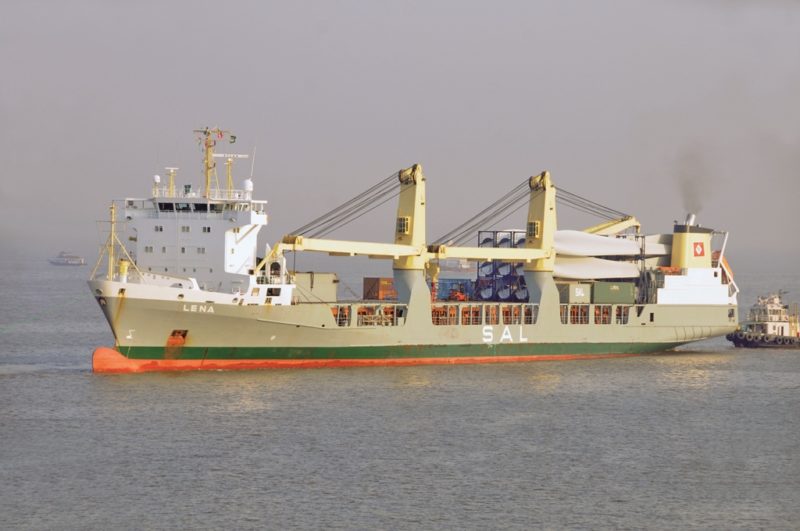
CRUISE SHIP CALLS AND TOURIST ATTRACTIONS
There were 52 scheduled cruise ship calls in 2020/21 at the International Cruise Ship Terminal at Ballard Pier Extension. However, the Covid outbreak resulted in these being cancelled. A new International Cruise Ship Terminal was proposed near the Gateway to India, but the Indian Navy raised issues of security and objected to this proposed location. The domestic cruise ship terminal operated two cruise ships, Angriya of Angriya Sea Eagle Pvt Ltd. and Karnika of Jalesh Cruises, on multiple cruises per season from the Angriya Domestic Cruise Ship Terminal at Ferry Wharf, Shed 3 of the Port of Mumbai to various port destinations in the country e.g. Goa, Cochin and Kandla. However, Jalesh Cruises ceased operations in 2020 and the Karnika has been sold for breaking.
Cruise ship passengers enjoy shore excursions to see some of the sights of Mumbai city, including the Gateway to India, the famous and signature landmark of the city that combines both Hindu and Muslim architectural styles and represents both cultures. It was completed in 1924, but was begun to commemorate the visit of King George V in 1911 to the city en-route to the Delhi Durbar, and only a cardboard mock up greeted the King instead. It was the first sight of all British travellers and troops to the city when moving to the steps of the building from troopships and passenger liners. It was also ironically the last exit point for all British troops leaving the city in a hurry at the end of British Raj in 1947. The building consists of a large central arch, with two reception rooms on each side, and was built of honey coloured Kharodi basalt with minarets and embellishments inspired by 16th century Gujarati architecture and was designed by Scottish architect George Wittet in ‘Indo Saracenic’ style. The gateway commands a spectacular view of the sea and when illuminated at night is very impressive.
The Wellington Fountain is near the Victoria Terminus Railway Station, the station being built in the ‘Victorian Gothic’ style in a rich extravaganza of domes, spires and arches. Frederick William Stevens was the designer, the station being completed in 1888 to commemorate the Golden Jubilee of Queen Victoria. Today, over one thousand trains and two million passengers pass through on this Central Railway line station each day, many of them to work in the nearby Port of Mumbai. The Colaba Causeway road was constructed by the British in 1838 to integrate the city with Colaba, the southern most spur of the peninsula.
The Fort district contains the Art district of Kala Ghoda, which originally had an equestrian statue of a black horse with King Edward VII on top, which was removed in 1965. This area is famous for the fortress like building of the High Court, the second largest building in the city, as well as the Army & Navy Building, the Rajabai Clock Tower, the David Sassoon Library, the Bombay University complex, and the Jehangir Art Gallery and the three storey Prince of Wales Museum, the most prestigious museum in Mumbai. Shore excursions would also take in the Horniman Circle Gardens laid out as a public garden in 1872, the Flora Fountain erected in 1869, and the towering skyscraper building of the Mumbai Stock Exchange.
The Ballard Estate was reclaimed from the sea by the Bombay Port Trust between 1908 and 1914, and planned by George Wittet, architect of the Gateway of India, and converted into a business district. The General Post Office was completed in 1913 to both European and Indian styles of architecture and combines an Islamic dome with classical British towers and has a lofty three storey rotunda inside. The inspiring new Bandra to Worli Sea Link eight lane cable road bridge arcs out over the sea to link these two congested areas in the west part of Mumbai, and cuts the previous one hour road journey to just a few minutes. It gives amazing sea views by day, and is lit by many coloured lights by night, and the length of all of the steel cable used in its construction is equal to a stretch of cable around the circumference of this planet.
Elephanta Island in Mumbai harbour was given cave temples chiselled into a rocky cliff and dedicated to Shiva in the 6th century AD, and contains some great masterpieces of Indian culture. The island was renamed from the Indian name of Gharapuri by the Portuguese after a huge stone elephant that once stood there. Elephanta is a UNESCO World Heritage Site and is worth a day boat trip from the cruise terminal of Mumbai to see the huge triple headed statue of Shiva, the glory of Elephanta, with almost all visitors emotionally moved by the experience of seeing this compelling statue, whose faces point in three different directions, forward and to left and right. Visitors can also take a longer day trip of one hour to the Sanjay Gandi National Park in Northern Mumbai with a wealth of birdlife, wild boar, fauna and flora, cobras and the occasional tiger in fenced off sections of the park. This treasure of nature is within the limits of the City of Mumbai and is one of only a very few nature reserves in an Indian city. English cricket teams played at the Oval Maidan ground against Sachin Tendulkar and his colleague Sunil Gavaskar, opening batsman and Captain, and other Indian batsmen on the west side of the city just off the glorious Marine Drive.
Marine Drive sweeps along a sea facing promenade which runs from Nariman Point to Malabar Hill, and was built on land reclaimed from the sea in the 1920s. It fronts a beautiful beach, Chowpatty Beach, and is also the main arterial link road between the suburbs and the prime commercial and administrative centres of Nariman Point and the Fort area with the Port of Mumbai in the latter area.
FORT STIKINE AMMUNITION EXPLOSION OF 1944
The Japanese Army had no capability for an advance into India after their surprise victories on the borders of the North Eastern Indian States and Burma in the Spring of 1942. However, the build up of Allied ammunition and munitions for the Burma campaign continued through the ports of Karachi, Bombay, Madras and Calcutta. On 14th April 1944, there occurred in the Victoria Dock in Bombay two cataclysmic explosions on board the standard ‘Fort’ type Fort Stikine, which threw debris and shattered windows over twelve miles away and claimed the lives of thousands of people. Fort Stikine had been completed by the Prince Rupert Dry Dock and Shipbuilding Co. Ltd. in British Columbia in 1942, and was named after an outpost of the Hudson’s Bay Company at what is now Wrangell in Alaska.
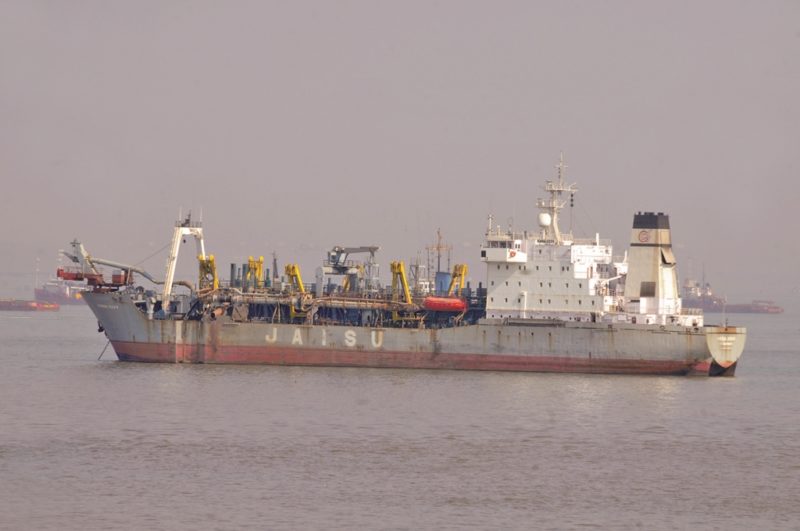
Fort Stikine was managed by Port Line and sailed from Birkenhead on 24th February 1944 for Gibraltar, Port Said and Karachi, and her cargo included over 1,400 tons of high explosives, munitions, shells, torpedoes, mine signal rockets, magnesium flares and incendiary bombs. In addition, there were a dozen crated Spitfire aircraft on deck plus gliders, oil barrels, timber, scrap iron and gold bullion valued at between £1 million and £2 million in 12.73 kilogram bars. The gold bullion was required to stabilise the Indian rupee, which had dropped in value due to the (unfounded) fear of invasion by the Japanese Army. At Karachi, part of the ammunition and airplanes was exchanged for 8,700 bales of cotton as well as sulphur, resin, oil and fish. Bombay is the chief marketing and shipping centre for cotton and possesses facilities not found at Karachi, with the coastal trade of cotton from Karachi to Bombay dating back a very long time.
Fort Stikine then sailed from Karachi to Bombay and arrived in the Victoria Dock, which has fourteen berths, on 12th April. One of her deck officers described her cargo as ‘just about everything that can blow up or burn’. In the mid afternoon of 12th April at 1400 hours, the crew were alerted to a fire onboard in number 2 hold, but they and dockside fire teams and fireboats were unable to extinguish the flames, despite pumping over 900 tons of water into the ship. The stench of burning fish prompted Capt. A. J. Naismith to order the fish to be removed, and while this was being done, fire officials looked at a copy of the stowage plan of Fort Stikine and advised that the ship should be scuttled as the source of the fire burned deep under new cotton bales. However, the dock was too shallow to allow the ship to be scuttled, the advice was to steam the ship out to sea. Capt. Naismith was pondering this advice as he phoned the ship’s insurers for instructions as what to do for the best.
At 1550 hours, the fire had taken a firm hold and the order to abandon ship was given, and sixteen minutes later there was a cataclysmic explosion that broke the ship in to and sent parts of the ship and debris over twelve kilometres away. Her boiler was found intact over half a mile away, and some two square miles of the eastern part of the city was set ablaze. A huge tidal wave swept across the dock and ripped ships from their moorings, with one ship finishing astride a warehouse. The emergency personnel and dock workers at the site suffered severe losses, with the official death toll put at 740 including 476 military personnel and 1,800 injured. Civilian deaths outside the docks in the city were not included, these were 500 dead and 2,408 badly injured. Capt. Naismith, Chief Engineer Henderson and Second Cook Alexander Joop were killed from Fort Stikine, the rest of the crew, knowing the cargo would explode, had headed for the dock gates and the Victoria Terminus railway station and survived. After the explosion, the Bombay Central and Victoria Terminus railway stations were in fact packed to capacity with the Indian population fleeing the city to outlying villages.
A second almighty explosion destroyed the remains of Fort Stikine at 1634 hours, and eleven other vessels including her sister Fort Crevier, and the Scindia Line passenger ship El Hind and cargo ships Jalapadma and Jalavijaya were destroyed at nearby berths in Victoria Dock. Jalapadma was nearest to Fort Stikine and her entire stern and poop deck with twelve pounder gun were blown over 200 yards away, and she was so badly damaged that she was later broken up in situ. Fort Crevier was used as a hulk until broken up at Bombay in 1948.
The other vessels lost were the passenger ship Baroda owned by the British India Line and completed in 1911 of 3,172 grt, China Navigation’s Kingyuan of 2,653 grt, Wallem & Co.’s Norse Trader of 3,526 grt, three Dutch ships of Van der Heyden of 1,213 grt, General van der Swelten of 1,300 grt and Tinombo of 872 grt, and the Eyptian ship Rod El Farag of 6,842 grt and Norwegian ship Graciosa of 1,773 grt. Thirty dhows were also lost, and one gold bar was amazingly found over two miles away and returned to the British Government, and two gold bars were recovered during routine dredging operations at the port in 2010, others having been dredged up in the 1970s. It took seven months by 8,000 men to remove half a million tons of debris from the dock system and bring them back into operation. A further sixteen vessels were badly damaged in the neighbouring Prince’s Dock, some having extensive blast damage to their superstructures, bridge and accommodation areas.
The cause of the two explosions was later ascertained as leaking oil barrels placed near to large quantities of sensitive high explosives, with up to 770 tons of highly flammable raw cotton in each hold, a very deadly combination. A memorial was erected in Mumbai to the many firefighters lost in the holocaust, and their memory is observed and honoured to this day each April during Fire Safety Week. The cost of transporting high explosives and ammunition in war time can be measured in the five thousand lives lost with several thousand more injured in the dreadful explosions at Bombay, and also at Halifax (NS) and at Bari in Italy.
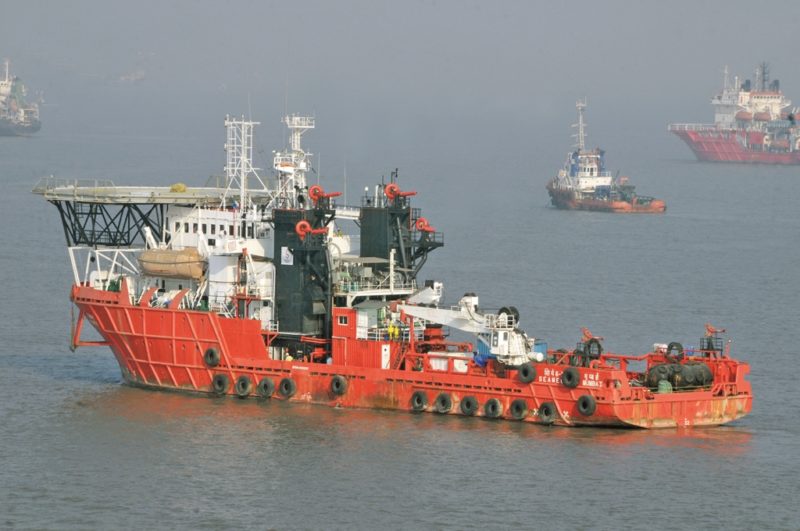
JAWAHARLAL NEHRU PORT TRUST (JNPT)
JNPT handles container traffic with 95% of its throughput being containers at the Port of Nhava Sheva, and only 5% being general cargo. It was established on 26th May 1989 to take away some of the container, general cargo and bulk cargo from the congested road systems of Mumbai and the congested docks of the Port of Mumbai. Barges operate to the Port of Mumbai from JNPT on a daily basis with destuffing at the Port of Mumbai and goods then distributed around the city for local consumption. This saves 1,200 road truck journeys daily on the highly congested road systems of Mumbai. The port is located at Nhava Sheva near Sheva Air Force Station six miles east of the Port of Mumbai, with the harbour also crossed higher up the harbour by the Vashi Bridge. The port handles containers full of textile products e.g. cotton shirts, knitted garments, embroidered cloth, sports shirts, as well as chemicals, plastics, machine tools, aluminium ingots and other non ferrous metals, and vegetable and edible oils. In the financial year of 2018/19, the port handled 5.1 million TEU of containers carrying 56.43 million tonnes of cargo, as well as 7.88 million tonnes of bulk cargo at other quays in this important port for the whole of India, as the container total represents over 60% of the containerised traffic to and from India.
The common entry channel with the Port of Mumbai is 11.6 miles in length and is maintained at a depth of 11.5 metres. The channel is 1,100 feet wide at its entry point, leading to the container ship quays of 6,600 feet in length, as well as bulk cargo handling quays of 1,500 feet in length. JNPT operates eight tugs of up to 50 tonnes bollard pull, four pilot boats, two mooring launches, and one high speed harbour patrol boat to keep the ships moving in and out of the port. There are three container handling terminals:-
Jawaharlal Nehru Port Container Terminal (JNPCT) with three berths of a total length of 2,200 feet and alongside depth of 13.5 metres. It operates six Post Panamax and two Super Post Panamax gantry cranes and 18 Rubber Tyred Gantries as well as reach stackers and other container handling equipment.
Nhava Sheva International Container Terminal (NSICT) is operated by P. & O. Ports of Australia, with two berths of total length of 2,000 feet with alongside depth of 44.3 feet. It operates six Post Panamax and two Super Post Panamax gantry cranes, 29 Rubber Tyred Gantry cranes, three rail mounted cranes, 134 trailers, two empty handlers, and has access on two rail sidings to the national Indian rail network.
Gateway Terminals India (Pvt) Ltd. is a joint venture between APM Terminals, a Maersk Line subsidiary, and the Container Corporation of India. It operates ten Post Panamax gantry cranes, three rail mounted gantry cranes, 40 Rubber Tyred Gantry cranes, two reach stackers, two empty handlers, 90 trailers and 61 twin lift spreaders for faster loading and discharging.
The total length of the quays at all three container terminals is 6,500 feet with a maximum annual container throughput of 6.0 million TEU, which will be increased in future. The Nhava Sheva Port is connected to the Indian National Highway road SH-54, and also to the Central Railway of India for fast movement of containers all across India to the north, south and east of the country. The port quays are very close to Elephanta Island with its fabulous and ancient caves, with the Sheva Air Force Station directly behind the container storage yards and road and rail links.

The Shallow Draft Berth at the port is 1,500 feet in length with alongside depth of 29.5 feet, and is used by feeder container ships, dry bulk carriers, general and multi purpose cargo ships. The Liquid Cargo Terminal is operated jointly by the Bharat Petroleum Corporation Ltd. (BPCL) and the Indian Oil Corporation. The quay length is 984.2 feet with this important oil jetty being of width 132.9 feet. Tankers of up to 50,000 dwt are handled with a terminal capacity of 5.5 million tonnes of liquid cargo per year.
The Port of Mumbai performance standards during 2017 included an average of 8,738 tonnes of cargo loaded or unloaded per day in the major cargo groupings e.g. for Dry Bulk the figure was 1,708 tonnes per day, for Break Bulk it was 2,825 tonnes per day, and for Liquid Bulk it was 18,884 tonnes per day. The average turnround time of all vessels was 2.4 days, and the average pre-berthing time after notification to Port Control was two hours.
The Port of Mumbai is well known internationally, and recently has received visits from delegations from Canada, Spain (Port of Barcelona), Thailand, Belgium (Port of Zeebrugge) and from South Africa.

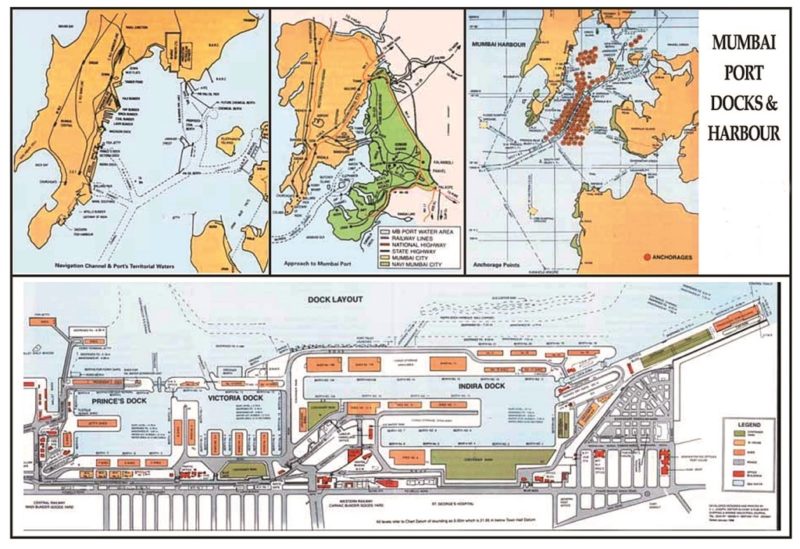
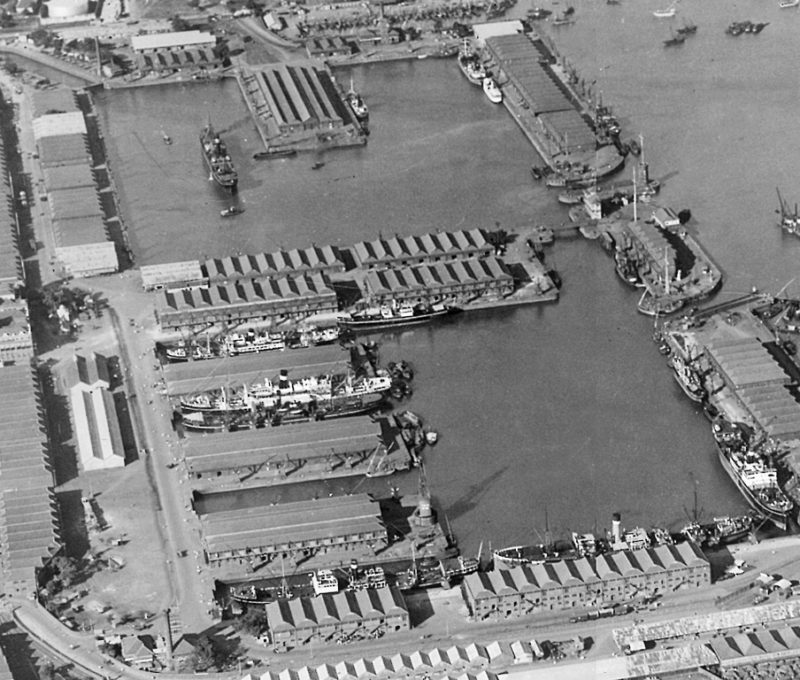
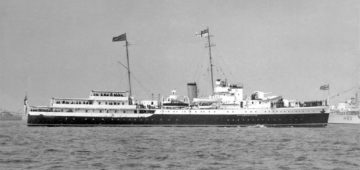



Comments
Sorry, comments are closed for this item